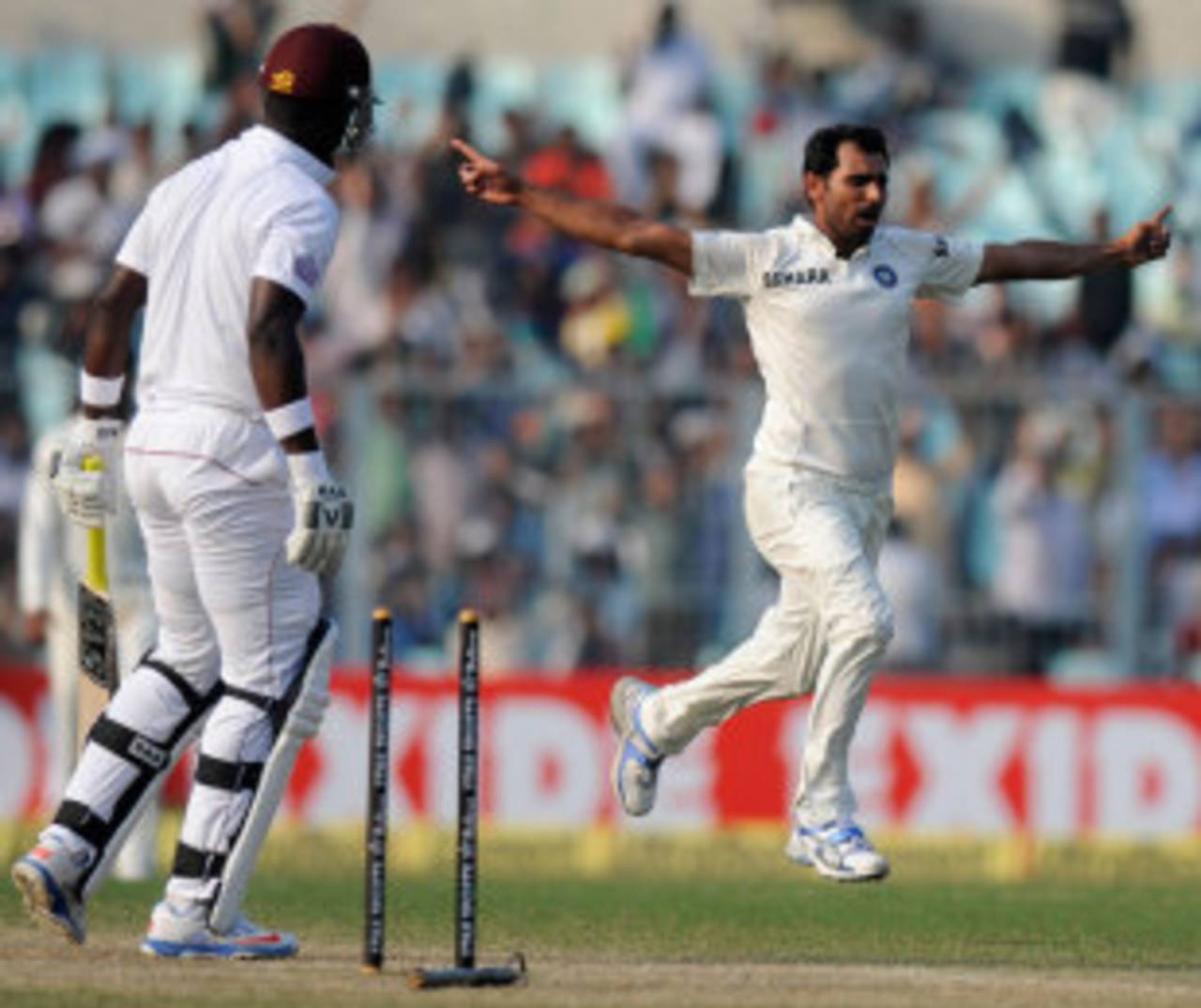There aren't many experiences as uplifting for a team as when an Eden Gardens crowd roars on the home team with an Indian bowler on a roll. Even when the Eden has only about 30,000. The bowler on the roll here was
Mohammed Shami, taking nine wickets on debut, mainly through reverse, six of them bowled, one lbw, hurting West Indies, who seemed better prepared against the spinners who had run through them on their last visit.
There was something a bit different here, though. Yes, the ball was moving towards the shiny side, but most of Shami's wickets came not with the traditional full reverse length, but from just short of a length. It was mostly the traditional movement back into the right-hand batsman, but the ball - possibly because of the length - would tail in ever so slightly in the air, and would be taken in by the weight of the shiny side after pitching. It was almost like seam movement.
We won't know if we are onto something here, or if it is more dangerous than the full reverse-swinging deliveries because the West Indies batsmen made it look much better than it was. None of them stood outside the crease to counter the movement, nor did any of the extravagant back lifts come down. Many of them got out playing big drives. That's not how you play reverse swing. So it's difficult to say whether seam movement, which is usually more dangerous than normal swing because you have no idea of its movement before it pitches, is more dangerous than full, late, reverse-swinging deliveries. You have to keep in mind that in this case the West Indies batsmen at least had a half inkling that the ball was going to move with the shiny side.
The West Indies captain Darren Sammy, though, thought the length made the difference. "We got the ball to move, to reverse a little bit," he said. "The difference between our bowlers and Shami was the length. He was bowling the ball into the pitch, bowling wicket-to-wicket. When he was reversing into the right-hander, he started on a good length, outside the off stump, hitting the stumps. Our bowlers were bowling it full, under the bat, or short. We were not consistent in our line and length. He showed us how to do it. And that is the way it should be done."
Sammy was pretty gracious in praising Shami. "The funny thing is, last time it was the spinners who took the wickets," Sammy said. "Now it is the debutant taking nine in the match. Credit to him. First game. Very impressive. He showed us how to bowl on these wickets in India. If some of the balls are keeping low, bowl dead straight, starting the ball from out there and reversing it back into the stumps. Most of his wickets except two of them were bowled out or lbw. We could learn a lot from India: the way they played their cricket and look to implement in our next match."
Sammy felt that by bowling on a length and not really full, Shami exploited the uneven bounce of the surface, and kept getting the movement at the same time. R Ashwin said the length might have done a few batsmen in, but it was also a matter of getting used to how to play the reverse swing. "When reverse swing came into play, I think nobody knew how to play it or what it was all about," Ashwin said. "Maybe it's about watching out for the reverse swing and playing it late. I think that's how reverse swing needs to be played. But definitely, what happens with the reverse swing is that once you get excited and bowl fuller, it becomes easier for the batsmen. What Shami did do with [Marlon] Samuels and a few other batsmen was brilliant. He hit the deck, and got to move it off the seam as well. He bowled brilliantly."
Bigger challenges lie ahead for Shami, and tours overseas where reverse swing might not be such a factor. Ashwin is looking forward to those days. "I think we are forming a potent attack, with the South Africa tour coming up," Ashwin said. "More than talent and ability, I think having taken wickets is important when going into any series. He's got a lovely five-wicket haul here. I hope he carries on, and forms a potent attack with some of our senior bowlers."
